Hey folks, Howie Ryder here from All Ways Exterminating. You’ve probably heard the buzz (and seen the splat) about the Spotted Lanternfly (SLF) here in New York — and especially right here on Long Island. This flashy-looking pest may be easy on the eyes, but it’s a nightmare for our vineyards, orchards, and backyards. Today, I’m giving you the real deal on what’s going on, and how you can send these bugs packing.
What’s Happening with Spotted Lanternfly in New York & Long Island
SLF is now well established across NYC and Long Island. According to New York State agriculture officials and Cornell Integrated Pest Management, if you’re in Nassau County or most of Suffolk County, you don’t need to report them — you just need to kill them on sight. On the North Fork and a few specific areas, officials may still want reports, especially to monitor spread in sensitive agricultural zones like wine country.
While they’re a nuisance for homeowners, the big agricultural concern is their appetite for grapes, apples, hops, and other high-value crops. Left unchecked, these bugs can damage vines and trees, reduce yields, and cause economic headaches for farmers and wineries.
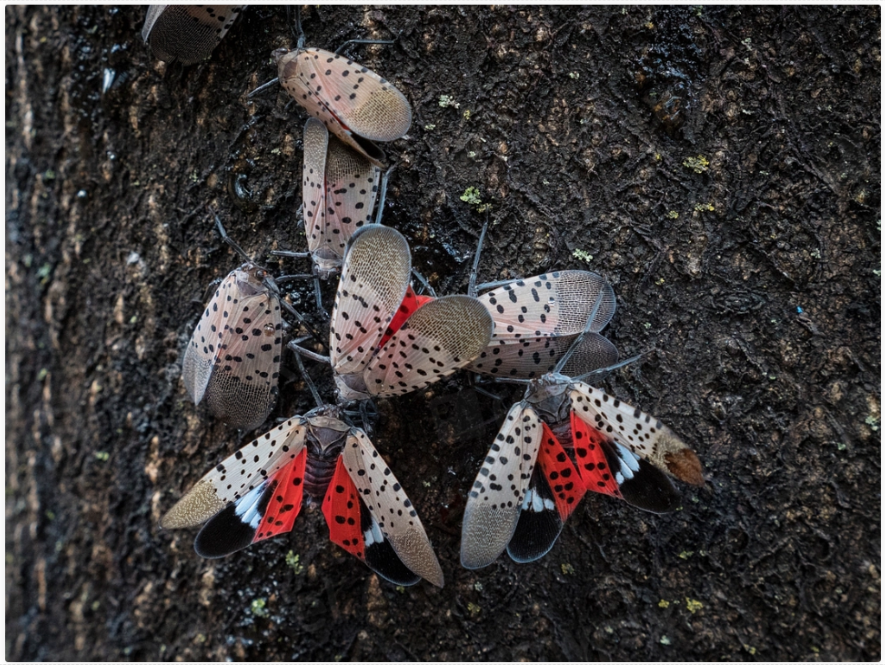
Lanternfly block party! Once they find a good tree, they bring the whole family. That’s why squashing just one isn’t enough — you’ve got to scrape egg masses, trap the nymphs, and stay on top of it, or you’ll have dozens setting up shop in no time.
How to Get Rid of Spotted Lanternfly: Best Practices
Step 1: Kill on Sight
See one? Step on it. Smush it. Give it the old shoe treatment. Whether it’s a hopping nymph or a flying adult, eliminating individuals before they reproduce helps keep populations in check.
Step 2: Scrape & Destroy Egg Masses
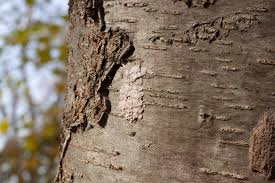
See that gray patch that looks like dried mud? That’s not dirt — that’s a spotted lanternfly egg mass. Once dry, they blend right in, which is why you need to train your eyes to spot them. Scrape them off into hot, soapy water and you just saved your trees a world of hurt.
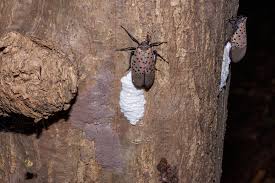
Caught in the act! This lanternfly is sealing up a fresh egg mass on tree bark. Each one can hold 30–50 eggs — which means every time you scrape one, you’re wiping out the next generation. Trust me, that’s a win.
From fall through early spring, look for mud-like patches on trees, vehicles, furniture, or even stone walls. That’s where SLF lay their eggs. Scrape them into hot, soapy water or a jar with alcohol/hand sanitizer, then bag and trash them.
Step 3: Stop the Hitchhikers
SLF love to travel — on your car, camper, outdoor furniture, or firewood. Before you head out, inspect and clean these items to avoid giving them a free ride to a new location.
Safer, Smarter Trapping Options
Circle Traps
These wrap around tree trunks and funnel SLF into a container. They’re especially effective from May through August when nymphs are climbing. Circle traps avoid the wildlife bycatch problems that come with sticky bands.
Sticky Bands with Wildlife Barriers
If you do use sticky bands, always add a mesh or screen guard to keep birds, squirrels, and beneficial insects from getting stuck.
Vegetation & Habitat Management
SLF have a favorite hangout: the invasive Tree-of-Heaven (Ailanthus). Removing this tree from your property, or working with professionals to convert male trees into “trap trees,” can reduce SLF numbers in your area.
When to Consider Insecticides
For most homeowners, chemicals aren’t necessary — SLF won’t usually kill landscape trees. But if you’ve got a severe infestation or valuable plants at risk, licensed applicators can use methods like tree injections, bark sprays, or soil drenches. Active ingredients may include dinotefuran or imidacloprid for systemics, and bifenthrin or carbaryl for contact sprays. Always follow the label and take care around pollinators and food crops.
Other Homeowner Tactics
A shop-vac or handheld vacuum can be surprisingly effective at taking out clusters of SLF quickly — just be ready to dispose of the contents in hot, soapy water or alcohol afterward.
Reporting Guidelines
On most of Long Island, you do not need to report SLF — just kill them. On the North Fork or other areas where officials still track activity, use the New York State reporting portal to log your sighting.
Seasonal Action Plan for Long Island
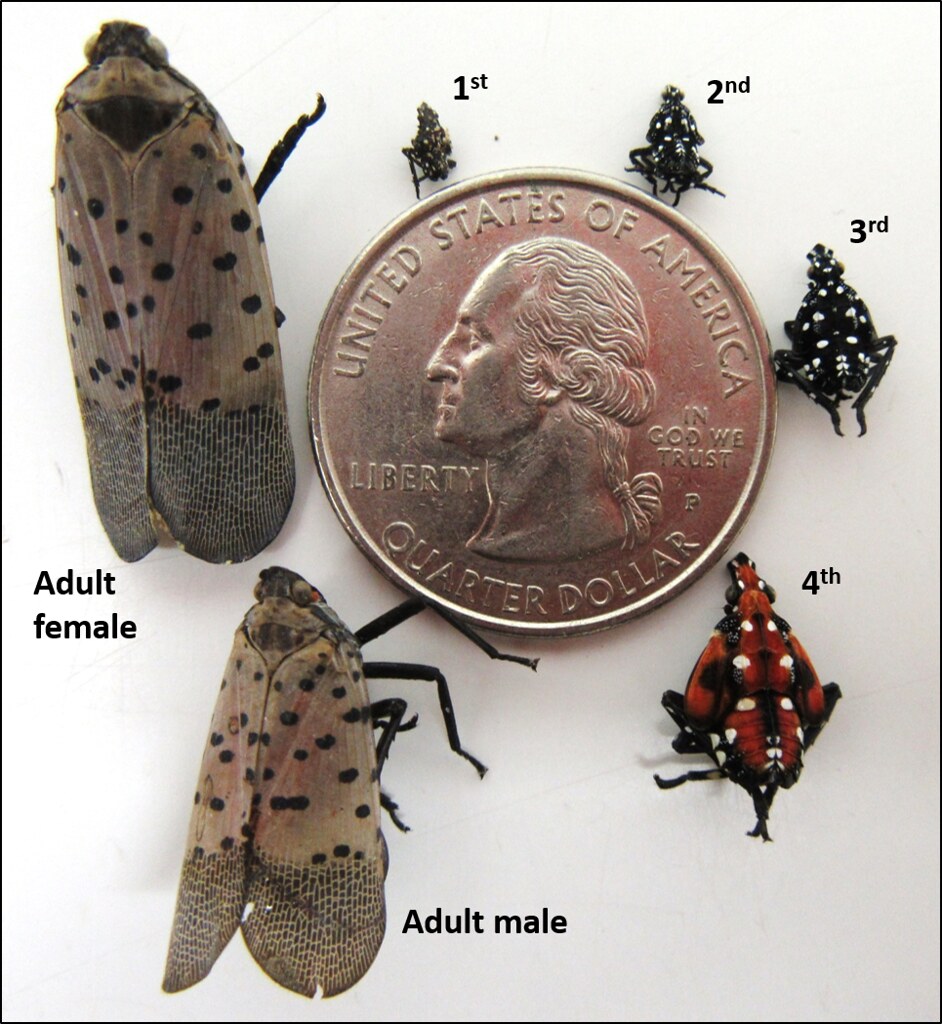
From tiny black-and-white specks to red nymphs and then full-blown winged pests, here’s the lanternfly life cycle next to a quarter for scale. If you spot ‘em at any stage, the rule is simple: don’t hesitate — eliminate.
- October – April: Scrape and destroy egg masses on trees, cars, furniture, and stone.
- May – July: Nymphs climb trees — deploy circle traps; avoid bare sticky bands or use protective cages.
- July – December: Adults active — stomp, vacuum, or treat as needed; inspect vehicles and outdoor items regularly.
Local Resources
- NYS Dept. of Agriculture & Markets SLF Page – Statewide guidance and reporting links.
- Cornell Cooperative Extension – Suffolk County – Local information for residents and growers.
- Penn State Extension – How-tos on traps, wildlife-safe banding, and management strategies.
Final Word from Howie
Look, folks — I know stepping on bugs and scraping egg masses isn’t the most glamorous job in the world. But here’s the thing: every SLF you destroy is one less pest to damage our grapes, trees, and backyards. With a little know-how and some quick action, we can keep their numbers down and protect what we love about living here on Long Island.
Need advice on SLF or any other pest problem? 📞 Call me at 516-509-8962 or visit AllWaysExterminating.com — I’ll help you get it handled.

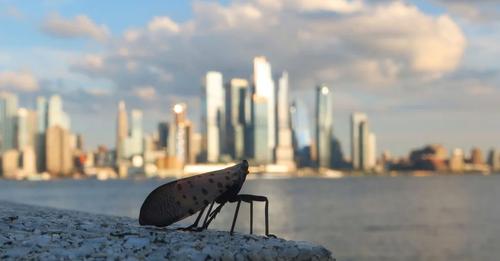
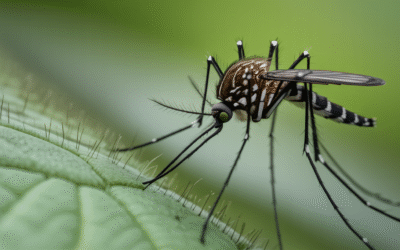

0 Comments